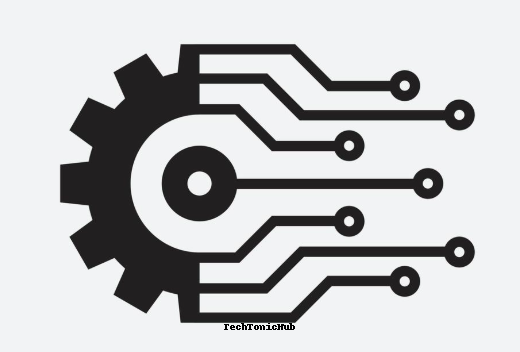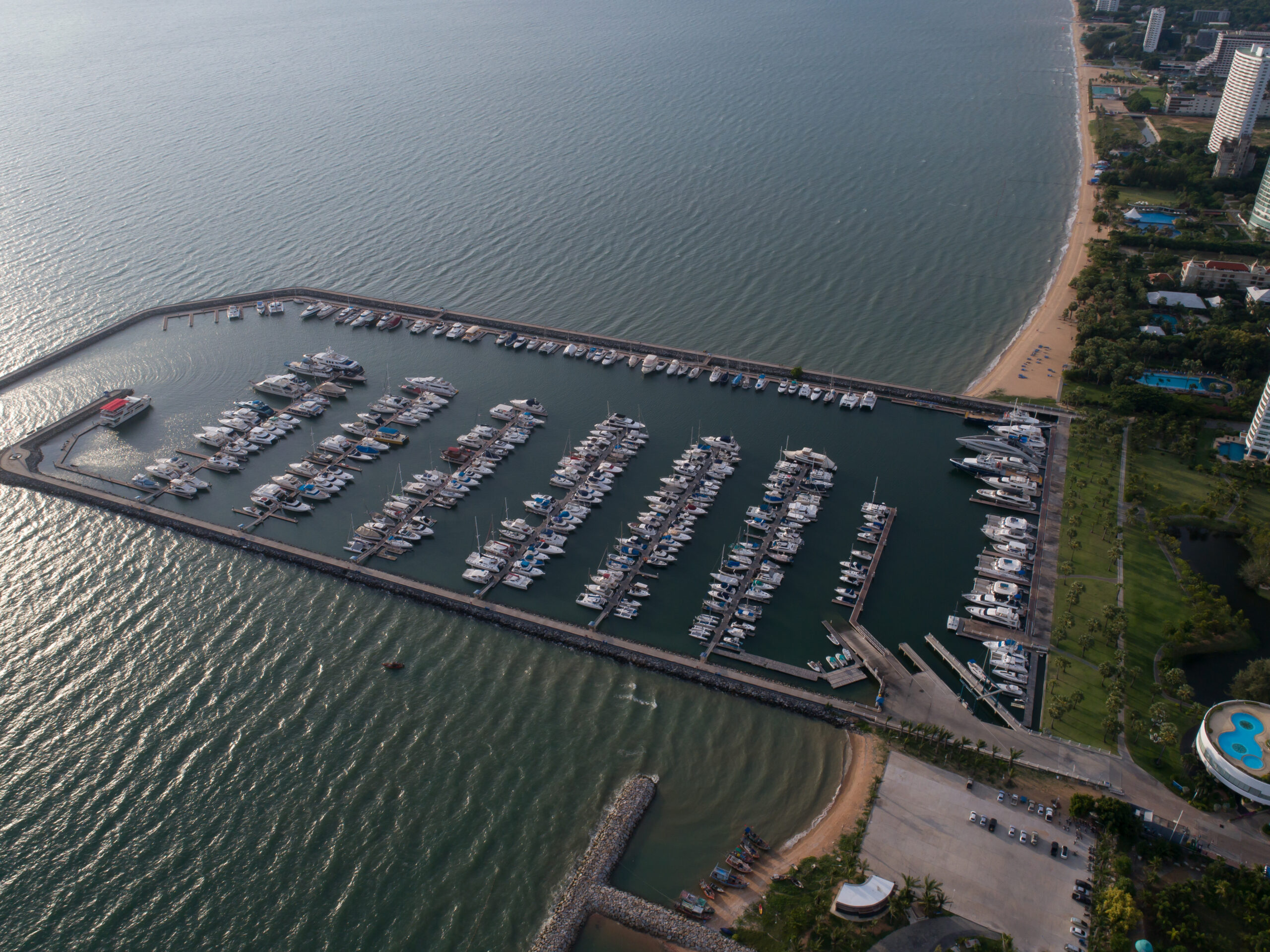Maritime technologies complex is at the forefront of transforming global commerce and addressing important environmental issues. Comprising over 80% of world commerce volume, the shipping sector is a lifeline for the global economy. It is, however, also one of the main causes of environmental contamination and greenhouse gas emissions. The marine sector is undergoing significant changes to align with global sustainability goals and enhance operational efficiency.
From implementing sustainable energy solutions to using automation in port operations, modern technologies are determining the direction this important sector will take. This site examines the most recent developments in marine technologies, including greener energy sources, digitalization, environmentally friendly ship design, automation, and safety innovations.
1. The Evolution of Clean Energy Solutions
Renewable energy sources are being more used in marine transportation due to growing environmental concerns. Marine propulsion systems are undergoing a revolution as the industry investigates solutions powered by wind, solar, and hydrogen, in response to worldwide attempts to decrease carbon footprints.
The Rise of Solar and Wind Energy-Powered Ships
Ships are now actively using clean energy systems like solar panels and wind turbines to reduce pollution and increase fuel economy. To run with zero greenhouse gas emissions, the first hydrogen-powered vessel in the world, the “Energy Observer,” combines solar panels, wind turbines, and a hydrogen-producing system. This demonstrates the potential of using environmentally friendly renewable sources to power the marine sector of Maritime technologies complex .
Emphasizing “the integration of renewable energy sources with traditional fuels in marine transport represents a significant step towards a more sustainable industry,” Dr. Emily Green of the Maritime Sustainability Research Institute says.
Hydrogen Fuel Cells
Hydrogen fuel cells are gaining ground as a sustainable energy source for future ships. Projects like Maersk’s upcoming carbon-neutral methanol feeder ships utilize hydrogen-derived methanol to enable near-zero carbon emissions of Maritime technologies complex .
Clean energy solutions offer immense potential to transform maritime transport into an environmentally responsible industry.
2. The Impact of Digitalization on Maritime Operations
Emerging as a game-changer, digitalization is transforming fuel efficiency, supply chain management, and navigation across marine operations. Data analytics and real-time monitoring help businesses to reach better safety, operational effectiveness, and less environmental impact.
Enhanced Navigation with Digital Tools
One of the most important developments is in real-time tracking tools and better guidance systems. Wärtsilä’s “Smart Marine” technology enables real-time sea route analysis, enabling cruise lines to optimize navigation, thereby reducing operational overhead and fuel consumption.
Chief Digital Officer Michael Blue of Global Shipping Corporation notes, “Digitalization is not just about technology; it’s about creating value and improving the efficiency of maritime operations in a way that is sustainable and safe.”
Fuel Consumption Monitoring
Advanced software like Lloyd’s Register’s “Real Time Optimization” helps operators optimize fuel consumption. United European Car Carriers (UECC), for instance, dramatically reduced emissions by equipping its LNG-powered fleet with real-time performance monitoring, improving both environmental responsibility and profitability of Maritime technologies complex .
Digitalization is transforming the maritime industry by fostering proactive decision-making and process optimization.
3. Developments in Eco-Friendly Ship Design and Materials
Eco-friendly ship design is a foundational pillar of sustainable maritime operations. From adopting lightweight materials to creating hydrodynamic designs, sustainable shipbuilding practices are paving the way for next-generation vessels.
Sustainable Materials in Shipbuilding
Traditional shipbuilding has relied on materials like steel, which can have a high carbon footprint. However, aluminum alloys, bioplastics, and sustainable composites are being increasingly utilized in eco-friendly ship designs to enhance durability while minimizing environmental impact.
For example, ABB’s Azipod propulsion installed on the “Coral Methane” LNG carrier provided not only better fuel efficiency but also environmental benefits by decreasing carbon emissions of Maritime technologies complex .
Designing for Reduced Resistance
Hydrodynamic hull designs and drag-reducing technologies are helping reduce resistance and fuel consumption for long-haul shipping vessels. Leveraging computational fluid dynamics (CFD), modern vessels feature sleek structures that ensure smoother voyages.
“Eco-friendly ship design and materials are not just a trend; they are the future of the maritime industry, driving innovation and environmental responsibility,” points out Alex Chen, Director of Environmental Initiatives, IMO.
4. Role of Automation in Cargo Handling and Port Operations
Port operations and cargo handling are shifting towards automation, enhancing productivity while improving safety in demanding environments. From self-driving cargo trucks to automated cranes, the integration of robotics and intelligent systems is transforming port activities.
Innovations in Automation
Technologies like remote-controlled cranes and autonomous vehicles deployed in maritime ports ensure seamless cargo handling while mitigating human error. For instance, Rolls-Royce’s autonomous tugboats in Norway’s Trondheim fjord demonstrate how automation significantly boosts efficiency while reducing risk.
Captain Sofia Rivera, of the Port Operations Safety Task Force, captures this progress succinctly, “Automation in port and cargo operations is not about replacing jobs; it’s about making them safer, more efficient, and more attractive for the next generation of maritime workers Maritime technologies complex .”
Enhanced Scheduling and Inventory Management
Automated systems are also optimizing inventory management within port facilities. Through real-time data analysis, managers can efficiently allocate space and reduce unloading time, ultimately minimizing layovers.
Automation is thus enhancing logistics management while meeting growing global trade demands.
5. Emerging Trends in Maritime Safety and Security Technologies
Are ships ready to face emerging challenges in safety and security? New technologies are ensuring resilience for global trade in regions fraught with environmental hazards and security threats.
Advanced Safety Monitoring Systems
Early warning systems and predictive maintenance technologies are offering superior risk mitigation for maritime vessels. Wärtsilä’s Smart Marine Ecosystem delivers integrated safety management solutions, ensuring seamless ship operation.
Combating Maritime Cybersecurity Threats
The rise of digital systems has also led to increased vulnerability to cyber-attacks. Companies are now adopting cybersecurity frameworks to protect vessel information and communication systems from external threats.
Anti-Piracy Innovations
Emerging anti-piracy technologies, such as Sound Cannons (Long-Range Acoustic Devices) and Unmanned Aerial Vehicles (UAVs), are advancing ship safety exceptionally. These systems ensure ship crews are less vulnerable when navigating high-risk waters.
Prof. Jamal Al-Abadi from the Maritime Security Research Center underscores, “Safety and security technologies in the maritime industry are evolving to meet new challenges, from environmental hazards to cyber threats, ensuring the resilience of global trade Maritime technologies complex .”
6. Case Studies in Maritime Innovation
Here are some noteworthy examples highlighting successful adoption of maritime technologies:
- Energy Observer: A hydrogen-powered sustainability marvel combining renewable sources like wind and solar.
- UECC LNG Fleet: Lloyd’s Register’s monitoring software optimizing fuel efficiency and significantly reducing CO2 emissions.
- Azipod Propulsion (ABB): Integrated on LNG carriers, providing reduced drag and impressive energy efficiency.
- Rolls-Royce Tugboats: Pioneers of fully autonomous vessel operations ensuring an early glimpse into maritime automation’s future.
- Wärtsilä Smart Systems: Revolutionizing energy management and navigation technologies for better operational control.
7. The Road Ahead
Maritime technologies have come a long way, carving a promising path toward a more sustainable shipping industry. From renewable energy adoption to progressive automation in port operations, the opportunities for innovation remain vast. However, with technological advancements come responsibilities—ensuring eco-friendly implementation, addressing ethical debates around automation, and fortifying cybersecurity defenses are just as important.
Stakeholders, including policymakers, environmentalists, tech innovators, and maritime engineers, must join forces to empower the sector and accelerate these cutting-edge transformations.
The future is bright, efficient, and sustainable; it’s time to sail toward it.
8. Collaborative Efforts Driving Maritime Innovation
The progress seen so far in maritime technologies has been largely fueled by collaborative efforts across various sectors. Public-private partnerships, international organizations, and academic institutions have come together to address the complex challenges faced by the industry.
Cross-Sector Partnerships
Maritime innovations frequently emerge from partnerships between private companies, governments, and researchers. For example, the Global Maritime Forum has been instrumental in bringing together thought leaders to tackle climate change and enhance safety standards. Such collaborations enable the exchange of knowledge, resources, and technology to accelerate progress in sustainable shipping Maritime technologies complex .
Role of International Regulations
Organizations like the International Maritime Organization (IMO) have played a crucial role in setting regulatory frameworks that push the industry toward sustainability. Initiatives such as the IMO 2020 sulfur cap and the push for carbon-neutral shipping have encouraged companies to adopt greener technologies and fuels. These regulatory measures serve as a strong motivator for continuous innovation.
Academic Contributions
Universities and research institutions globally are exploring groundbreaking solutions for maritime challenges. From developing alternative propulsion systems to advancing materials science, academia plays a pivotal role in equipping the maritime industry with cutting-edge technologies. Collaborative research programs foster innovation and ensure that new solutions are tested in real-world scenarios before full-scale implementation.
Fostering a Global Vision
A cohesive vision for the future of the maritime industry requires contributions from every stakeholder. By prioritizing sustainability, safety, and efficiency, the sector can address global trade demands while minimizing its environmental footprint. The continued spirit of collaboration will be key to achieving these shared goals and navigating the complexities of modern shipping.
Driving Innovation Through Technology Adoption
Using creative technology in the marine industry not only solves present problems but also creates opportunities for long-term development. For instance, digital twins are increasingly becoming a common tool for ship designers and operators. These virtual duplicates of actual assets enable real-time monitoring and data-driven decision-making, thereby minimizing downtime and enhancing overall efficiency. By providing safe, open, and automated documentation systems that cut paperwork and help lower fraud rates, blockchain technology is also revolutionizing the supply chain.
Moreover, the combination of artificial intelligence (AI) and machine learning (ML) has made it possible to optimize marine activities. These technologies improve operational dependability and cost-effectiveness, from predictive equipment maintenance to smart route planning and freight management. The combination of human experience and artificial intelligence-driven technology is revolutionizing modern shipping.
Balancing Innovation with Tradition
Although the development of the marine sector depends mostly on innovation, respect for old methods is equally crucial. Developed over millennia, seamanship forms the foundation of operations and helps define the sector into what it is today. New technology should enhance, not replace, these proven abilities. For example, sophisticated navigation systems could provide exact data, but when unanticipated difficulties arise at sea, the experience of seasoned captains is still very essential.
The marine sector can guarantee not just technical strength but also strong roots in its long-standing legacy by maintaining a careful balance between innovation and tradition. This blend of traditional and contemporary values upholds the fundamental principles that established the sector and ensures a smoother transition in the future.
Empowering the Workforce for the Future
Workforce development is another crucial component of marine innovation. Rising automation and artificial intelligence technologies make upskilling and reskilling programs for marine personnel much more important. Digital literacy, cybersecurity awareness, and handling complex systems are just a few of the training courses meant to enable the workforce to shine in a technologically driven workplace.
Organizations have to also take care of the human aspect of the change by encouraging a flexible and cooperative culture. Maintaining efficiency and morale depends on improving the welfare of seafarers, especially in view of longer trips and growing dependence on technology. Investing in their personnel helps the marine industry guarantee a future-ready talent pool able to change with rapid technology developments.
Sustainability as a Cornerstone of Maritime Progress
Driving long-term development in the marine sector still depends mostly on sustainability. Since worldwide shipping accounts for a large share of carbon emissions, stakeholders are giving ecologically friendly methods top importance. The shift to alternative fuels like hydrogen, ammonia, biofuels, and liquefied natural gas (LNG) is ushering in reduced emissions. Simultaneously, there is an increased focus on electrification and hybrid propulsion systems, which is enhancing the industry’s ability to meet stringent environmental standards.
Adopting circular economy ideas—where shipbuilding techniques concentrate on sustainable materials and designs that allow simpler recycling and reuse at the end of a vessel’s life cycle—is another goal under progress. Furthermore, helping to reduce resource consumption and increase operating efficiency are improved hull designs and energy-efficient technology, such as waste heat recovery and air lubrication systems. These developments show the industry’s will to develop environmentally friendly solutions that remain financially feasible..
Collaborating for Decarbonization
Reaching ambitious decarbonization targets needs a worldwide coordinated effort. Industry coalitions like the Getting to Zero Coalition are driving the acceleration of technologies aimed at achieving zero-emission shipping by 2025. To investigate workable energy options and carry out required infrastructure improvements, governments, research institutes, and commercial companies are combining funds and knowledge.
The development of port infrastructure significantly contributes to the advancement of sustainability. Green ports, equipped with technology such as alternative fuel bunkering systems and shore electricity, are undoubtedly essential. By building infrastructure that supports innovative green technology, ports can reduce emissions both at sea and when ships anchor, thereby reducing the industry’s environmental impact.
Addressing Economic Challenges
Although creative and environmentally friendly ideas have enormous promise, the marine sector has clear financial difficulties implementing them. High upfront costs pose challenges for many shipping firms, particularly when it comes to research and development or the transition to green fuels. Governments and financial institutions are exploring subsidies, tax incentives, and financing systems to assist the shipping sector in its modernization journey.
Further financial cooperation between public and private companies is crucial to build confidence and provide opportunities for smaller firms to adopt sophisticated technology. Encouraging worldwide compliance with decarbonization and sustainability criteria will require bridging the gap between ecological goals and financial viability to ensure seamless market acceptance.
Looking Ahead
At a turning point, the marine sector is ready to reinvent its future via creativity, environmentalism, and teamwork. Looking forward, human-centric tactics, renewable technology, and artificial intelligence will help define the course of global shipping. However, to achieve these benchmarks, stakeholders must unite in their vision and make long-term commitments.
Emerging technologies such as blockchain-enabled supply chains and autonomous boats have the potential to revolutionize operational efficiency and transparency in marine transportation. Adoption of these developments must go hand in hand with strong rules and ethical frameworks to guarantee safety and fair access to invention. Simultaneously, worldwide initiatives tackling climate change will still impact the speed of industrial transformation toward greener, more energy-efficient technologies.
The growth of the marine sector is ultimately a joint effort rather than a single one. The industry may present itself as a major driver of sustainable development by encouraging alliances, funding workforce development, and overcoming economic and environmental challenges. Using this all-encompassing strategy, the marine sector might establish worldwide benchmarks for resilience, creativity, and ecologically friendly expansion in the next decades.
With innovation, sustainability, and teamwork directing the road ahead, the marine sector is at the brink of change. The industry has the ability to reimagine contemporary shipping while honoring its nautical legacy by using innovative technology, supporting worldwide partnerships, and developing a future-ready workforce. Giving sustainable development top priority not only helps solve modern problems but also guarantees the industry’s long-term survival in an ever-linked planet. Though the path ahead is challenging, the marine sector can keep growing as a major part of world commerce and innovation with relentless dedication and a common vision.




